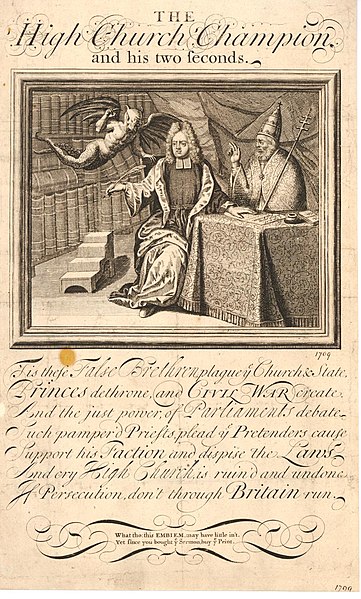In Anglican Christianity, low church refers to those who give little emphasis to ritual. The term is most often used in a liturgical sense, denoting a Protestant emphasis, whereas "high church" denotes an emphasis on ritual, often Anglo-Catholic.
1709 satirical broadside with an engraving showing a Janus figure preaching, the left half showing a bishop in a pulpit, the right half a puritan in a tub.
"Low Church Devotion" (Adolph Tidemand, 1852)
The term high church refers to beliefs and practices of Christian ecclesiology, liturgy, and theology that emphasize "ritual, priestly authority, [and] sacraments". Although used in connection with various Christian traditions, the term originated in and has been principally associated with the Anglican tradition, where it describes churches using a number of ritual practices associated in the popular mind with Roman Catholicism and Eastern Orthodoxy. The opposite tradition is low church. Contemporary media discussing Anglican churches often prefer the terms evangelical to low church and Anglo-Catholic to high church, even though their meanings do not exactly correspond. Other contemporary denominations that contain high church wings include some Lutheran, Presbyterian, and Methodist churches.
Satirical broadside of 1709/10 accusing Henry Sacheverell, "The High Church Champion," of "Popery."
Eucharistic procession by the Church of St. Mary Magdalene (Toronto)




